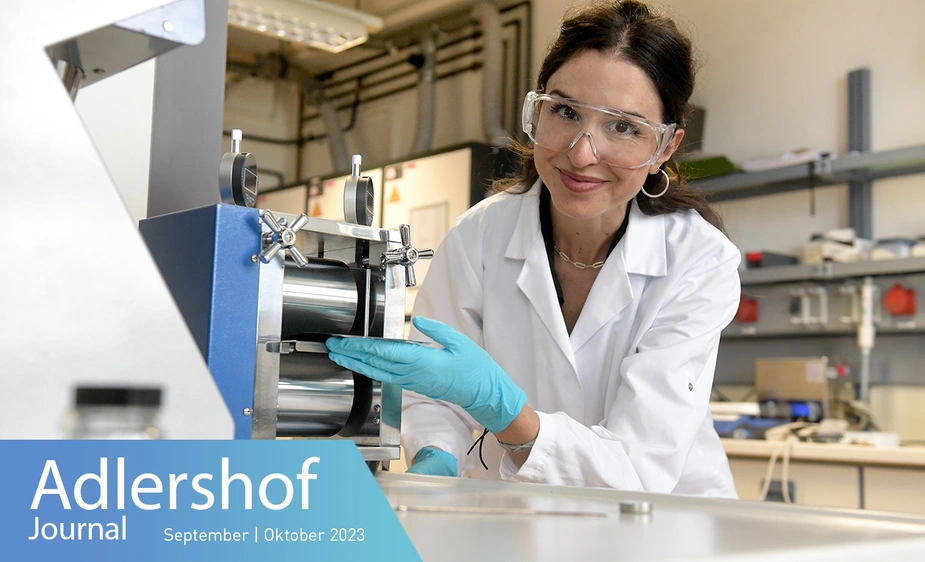When does a battery get tired?
A research team from Adlershof is developing a reliable method for lithium-ion batteries

When Dalia Morcillo hits buttons, the laboratory at the Federal Institute for Materials Research and Testing (BAM) starts to flash and squeak. The narrow room is jam-packed with scientific devices and measurement instruments. As part of her ongoing dissertation, the researcher’s work focuses on an alkali metal that can be found in virtually every battery: lithium.
“This is a xenon arc lamp, a graphite furnace, and an atomic absorption spectrometer,” says Morcillo. She points to a small lamp that sends bright beams of light through a narrow tube, where she adds crushed lithium. The powder is liquefied and analysed using spectroscopy. “The isotopes lithium-6 and lithium-7 have different energy levels, but there is some overlap.” Based at the Inorganic Reference Materials division, the scientist points to a poster on the wall that features some funny-looking characters, almost like cartoons. A freshly charged lithium battery is depicted as an energetic skateboarder, while the discharged battery is drawn as a very old person on crutches. “I have won several prizes for the poster at international colloquia,” she says, with a laugh.
The design is quirky, but the topic is very important. Since lithium-ion batteries have very high energy density even when built compactly, they are often used in smartphones, tablet computers, digital cameras, as well as electric vehicles. After many charging cycles, however, lithium-based batteries age. It is helpful to be able to recognise when reliable operations are no longer possible.
To learn more about this, Dalia Morcillo has studied the processes at the atomic level. When the battery is charged or discharged, the lithium ions go back and forth between the electrodes and are then deposited in their grid-like structure. By conducting experiments at the electron storage ring BESSY II, the researcher was able to show that, over time, tiny fractures and cracks appear on the electrodes. The lighter lithium-6 gets into the cavities of the electrodes quite well. The heavier lithium-7, however, accumulates outside of them, reducing its mobility. The battery performance decreases, and it has to be recharged at ever shorter intervals.
To prevent sudden failure, it would be useful to be able to detect the battery’s fitness. The BAM team around Carlos Abad, a chemical researcher, benefits from the fact that the spectra for the distribution of the isotopes are very characteristic. This is because isotopes absorb light in different wavelengths. The differences are detectable but very small. “They resemble each other in the way the faces of very closely related humans do,” says Morcillo. This sparked an idea in the team to apply facial recognition algorithms in their analysis. To do so, the measurement device had to be trained by feeding it mixtures of lithium-isotopes whose ratios were known.
This is a huge success for the research team because it was hitherto impossible to make accurate statements on the current state of batteries. “This allows us to provide companies with a quick and inexpensive method to assess and evaluate the ageing behaviour of lithium-ion batteries already in the laboratory,” says Morcillo. The researcher studied chemistry and engineering in Madrid and completed her master’s degree in Munich before working in the automotive industry for a few years. “There, I was mainly interested in new technologies for electric vehicles and lithium-ion batteries.” In Adlershof, she is excited by the many possibilities for collaboration with other research facilities, including, for example, the California Institute of Technology (Caltech). Working in Berlin, Morcillo particularly enjoys the city’s diverse cultural offerings.
Dr. Paul Janositz for Adlershof Journal